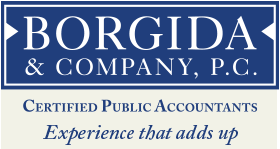 1. Sign the Work Authorization and complete the Tax Organizer
1. Sign the Work Authorization and complete the Tax Organizer
In order to hire a CPA, you will need to authorize the work. This is done by signing the so-called engagement letter. This establishes the scope of the services to be rendered. In this case it’s for the preparation of your federal individual income tax return and state income tax returns as needed.
A Tax Organizer will be sent to current clients of the CPA, generally in early January. This could be done via the Client Portal (see below), encrypted email or good old fashioned snail mail. Clients that accurately complete the Tax Organizer can be assured that all of the material required to complete the returns has been provided. The Tax Organizer will have the prior year’s information listed, a series of questions to answer and a space to ask questions.
2. Forward all of Your Income Tax Material As Soon As Possible
You should receive your W-2 from your employer by January 31st. The 1099’s are due on February 28th. Regrettably many custodians request additional time to file the 1099’s and this extension of time is generally granted. This causes delays in the documents being issued to the taxpayer and this causes delays in getting the material to the CPA. With that said, forward the tax material you do have to your CPA and give them a heads up if you are still waiting for any tax documents.
3. Clearly Document Your Estimated Tax Payments
Many taxpayers are required to file Estimated Tax Payments. The income tax system is based on a ‘pay as you go’ system. Employees earning wages will have taxes withheld from their paycheck. Retirees may have taxes withheld from their IRA distributions and Pension income received. Retirees may also elect to have voluntary withholding from their Social Security benefits received. Self employed individuals or taxpayers with income from Partnerships, Limited Liability Companies (LLC’s), Subchapter Corporations or other passive income (interest, dividends and capital gains) may be required to pay estimated tax so as not to incur an underpayment of estimated tax penalty.
There is a significant amount of notices send out and penalties assessed by the IRS. For the 2015 returns filed (the last year currently available) there were about 10 million notices sent with penalty assessments of about $1.3 billion.
To avoid underpayment penalties taxpayers with Adjusted Gross Income (“AGI”) over $150,000 can pay in either:
- 110% of the prior year tax
- 90% of the current year tax
Taxpayers need to carefully document how much they paid and when they paid it. Common errors include:
- Transposing the amounts paid
- Paying late
- Mailing checks to the wrong address
- Mailing the federal estimated tax check to the state tax department and vice versa
4. Use The Technology of the Client Portal
The Client Portal is an online tool to allow clients to send and receive documents electronically. This is a big advantage for clients and their communications with their CPA. All you need is an email address and this tool can be set up.
5. Don’t Wait for your K-1 Forms
Investors in Partnerships or Subchapter S Corporations will receive a so-called K-1 Form. This represents their income or loss from this activity. Additionally beneficiaries of estates and trusts will also receive a K-1. Currently the due date for December year end Partnership and Subchapter S Corporate returns is March 15th. Currently the due date of December year ends for Trusts and Estates is April 15th. However, it is common for Partnerships, Subchapter S Corporations and Trusts and Estates to be put on extension. This can delay the filing of the returns and hence, the issuance of the K-1. Don’t wait for the K-1. Deliver all of your tax material to the CPA that you have. The K-1 can be forwarded to the CPA when it is received.
6. Sign the Electronic File Authorization and Bank Account Verification Forms
Individual income tax returns must be filed electronically. For the CPA to file the return electronically, they must be authorized by the client to do so. This is done by the client and his or her spouse if they are married, signing and dating IRS Form 8879, IRS E-file Signature Authorization. Form 8879 can’t be signed by the client until the return is complete. This document gives the CPA the authority to electronically file the return for the client. The CPA can’t file the return without this document. This document is then maintained on file by the CPA. They don’t have any responsibility to forward this form to the IRS.
Additionally, if the client has an income tax refund and they would like it to be direct deposited into their checking or savings account, they will need to sign and date a Bank Account Verification Form. With this form, the client is attesting to the Name of the Financial Institution, Routing Transit Number and Account Number, Type of Account (checking or savings) and whether the account is a Joint Account. Like the IRS Form 8879 mentioned above, the CPA merely needs to maintain this document on file.


